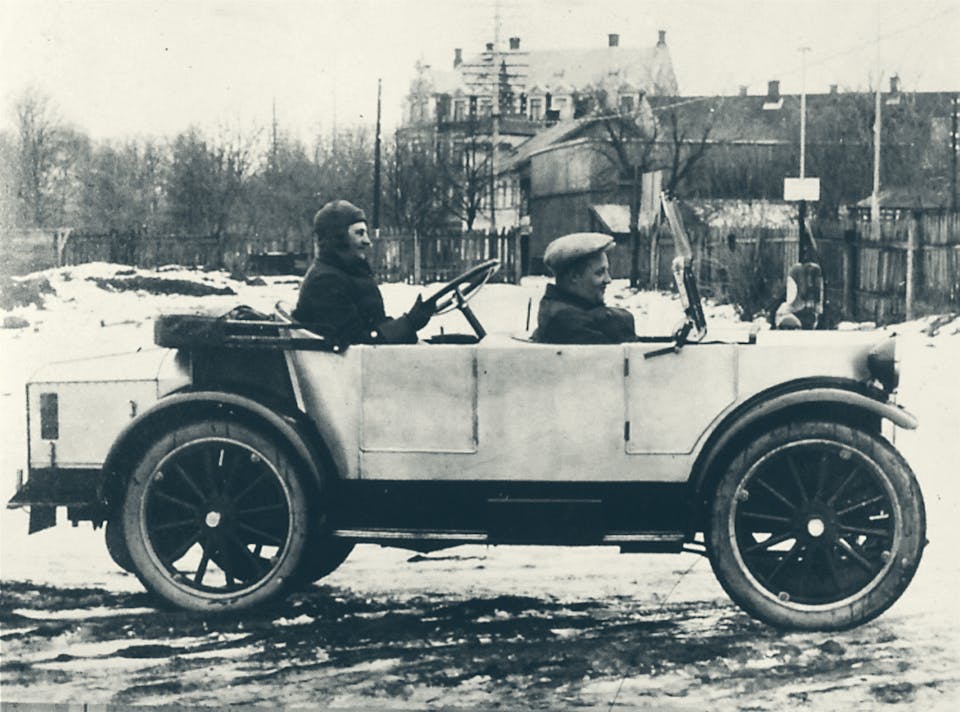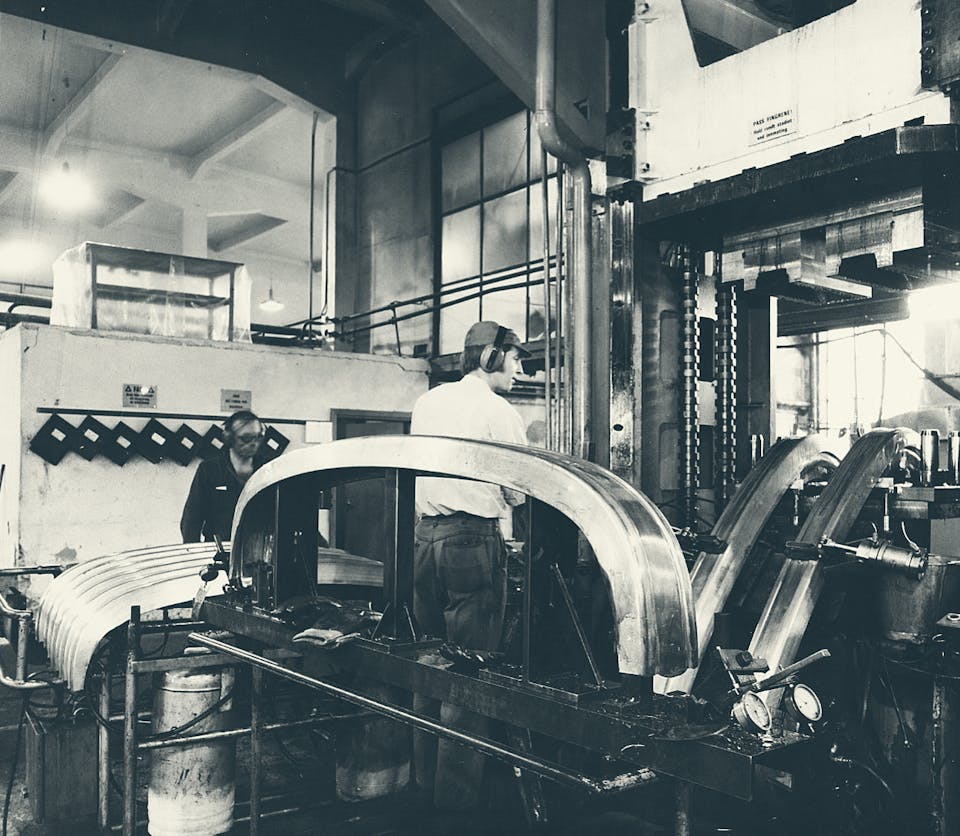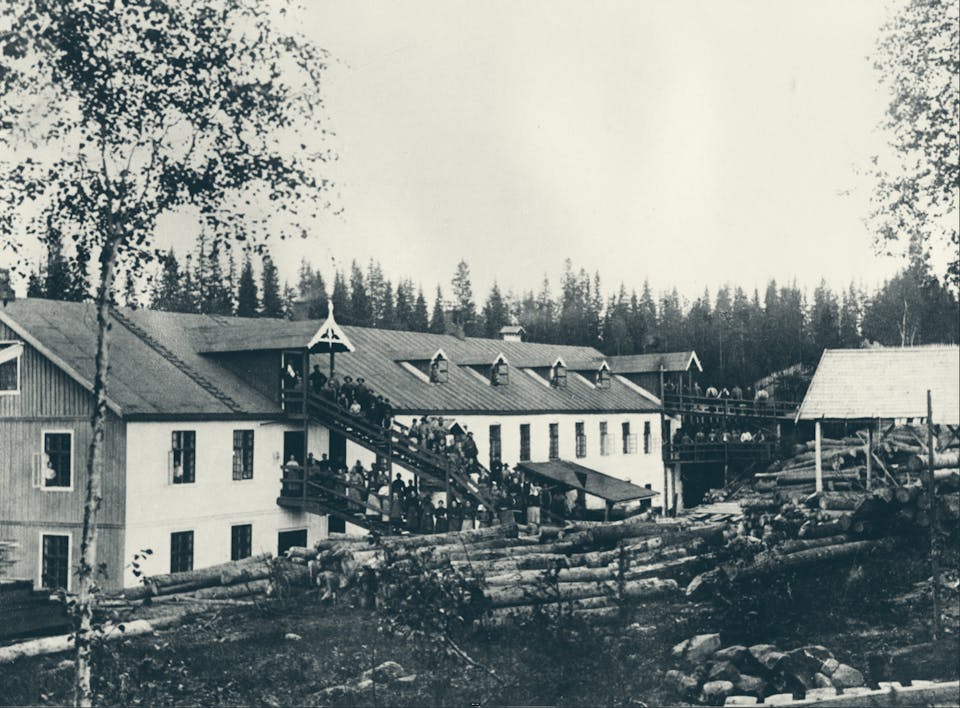"From handicrafts to world-leaders in robotised and automated technology"
– 125 years of innovation and development
![]()

The beginnings of Raufoss Industrial Park can be dated back to 1896 when Rødfoss Patronfabrikk first began producing ammunition for the Norwegian Armed Forces, although the area’s establishment can also be seen as the fusion of many longstanding metalworking and handicraft traditions in the Toten area and a short-lived matchstick enterprise which was wound up in 1893.
From that point on, the history of Raufoss industry has been one of ups and downs, but buoyed along at all times by an undercurrent of knowledge, creativity, industriousness and perseverance. From an overarching perspective, the last 125 years of industrial enterprise at Raufoss can be divided into a number of distinct epochs.
Its beginnings in 1896 were rooted in the endeavour for Norwegian independence, an epoch which culminated with the dissolution of the union between Norway and Sweden in 1905 but which persisted throughout the First World War. This was perhaps the strongest period of development throughout the entire history of Raufoss.
After the war came to an end, investment in the nation’s military began to wane. The interwar period was a time of great challenge to both creativity and perseverance – a circumstance which meant enormous production and market difficulties in meeting the demands of civil society for consumer products.

The production of ammunition continued during the Second World War, this time under the command of German leadership and in service of the German army, and when the war was over the country needed rebuilding once more. Not just economically and socially, but in terms of military capability as well. The production of ammunition became the core focus and Raufoss Ammunisjonsfabrikker took on a national role as a manufacturer of ammunition and rocket motors. Thanks to American capital and technology, Europe’s defence industry would re-emerge as a key component in the Cold War, but when US financing tapered off in the 1950s, the impetus was lost. Creativity and perseverance were to once more come into play.
New technology, new products and new markets were needed to keep the wheels in motion. The next two decades were characterised by extensive technological development and diversification. It was during this period that aluminum became a key material and automobile parts a key product area. New products and markets were also developed by using old knowledge about steel and brass in new ways.

Some of the epochal transitions in the history of Raufoss are more difficult to pinpoint precisely than others. The lead-up and the end of the two world wars are easy to pin down as they entailed concrete changes to the area and its industry, but the five years before and after 1980 do not stand out quite so clearly. Nonetheless, this period represents a time of change which constitutes a paradigm shift. This was the period when the centre of gravity at Raufoss shifted from manufacturing products that were designed and developed by customers to creating products designed by the local industry itself.
The fall of the Berlin Wall in 1989 had a significant impact on Raufoss industry – predominantly on its defence operations, but also on other product areas as well. This was largely due to factors such as internationalisation. The result was that Raufoss ASA was eventually wound up during the last decade before the millennium. At that point, the future of Raufoss industry was highly uncertain and at times it seemed like 100 years of proud industrial history might be coming to an end.
But that’s not how the story went. Once more, the creativity, drive and skill accumulated over the last 100 years swung into play. After a few difficult years at the beginning of the 2000s, there was a complete restructuring of the enterprise into what is known today as the Raufoss Industrial Park. The original structure which amassed all business areas under a single company was replaced by a number of independent companies, each focused on their own products and business models. The defence industry and the automotive industry went their separate ways. The big question was whether or not Raufoss industry could come to play an important national role once more. Today we all know the answer to that question.
